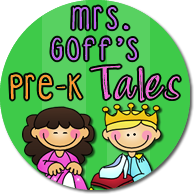When my son (who is now in college) was in 4th grade, his teacher did a lesson plan that really made an impression on him. She had several kids participate in a role playing where each kid was given a diagnosis and pretended they were at the doctor's office with their complaint. The first child had a headache and the teacher (playing the doctor) gave the child an aspirin, she then proceeded to pretend to give an aspirin to each of the other children (although their complaints were a stomach ache, a broken bone, a severe cut, etc) because she wanted to "be fair and give everyone the same thing." After the play acting, the class discussed why the doctor's actions weren't really fair to the patients. Each child had different needs and so to be "fair" the doctor should give the child what he needed (even if it was different than what someone else received). I think this is a wonderful way to explain to children in early elementary school that teachers don't always treat everyone exactly the same ... teachers (like a doctor) need to respond to what a child needs. I think that if children aren't expecting to be treated equally all the time, they naturally understand fairness. I have often been impressed with a child's innate ability to understand that a special needs child needs different rules.
In Kindergarten and Pre-K, I have used Ezra Jack Keats' book Peter's Chair to explore the same idea...that we don't all need the same things, so it is fair to give people what they need. In Peter's Chair, Peter is upset because all of his baby things are being given to his new baby sister. He decides to take his favorite little chair and run away (to the front stoop). When he tries to sit in his little chair, he realizes that he has gotten too big for it. In the end, Peter goes back inside and sits on a "grown up chair" and suggests that he and Daddy paint the toddler chair pink for his baby sister. Like all of Keats' books, this book is wonderful for making inferences about feelings.
Although I feel very strongly that "fair is not equal", I do think that it is important that teachers consciously try to be the person who exemplifies "fairness and integrity" for the children in their classes. "Teacher's pets" are fundamentally unfair and it breaks my heart when I see it because children always notice it. Obviously, there are always certain children that especially touch our hearts and others that somehow always push our buttons. As teachers we have to be careful that we don't let our natural biases prevent us from giving everyone an equal chance to participate and succeed. Teachers therefore need to act deliberately and use tools to make sure that we are being fair . For example, I think that using name sticks in a "Pick Me" jar is a great way to call on students. Children really appreciate this perceived fairness and it also helps me, as a teacher, to not always call on (or ignore) the child who always has his hand up.
Please check out Maria's blog and see how other people are teaching fairness.
















Equality v. equity is a difficult concept to teach our littlest learners; heck, I know plenty of grown ups who don't always get that. Thanks for this insightful post. I'll have to check out Peter's Chair!
ReplyDeleteBarbara
The Corner On Character
This comment has been removed by the author.
DeleteHi Barbara, I agree that its really a hard concept but I think that as adults we sometimes get so caught up in treating kids equally that we create kids that are counting the number of presents they got rather than enjoying and being appreciative for what they have. As a Mom, I often joked with my kids that I didn't try to be fair. Actually, I tried very hard to be fair... just not equal (with 4 kids with different interests and needs it was impossible to spend the same time or money on each of them...lacrosse was way more expensive and time consuming for me than my daughter's participation in costume crew :) I love that my children seldom said "its not fair."
DeleteThat being said, I do think that even young children can understand fairness in the context of "playing by the rules." I might have to write another post about using games to teach fairness :)
I LOVE this post!! I agree with EVERYTHING you said.
ReplyDeleteFair is not always equal. I am going to pin this to Pinterest so that I can go back and reread it & to share it with others. Well written!!
Connie:)
welcome to first grade room 5
Thanks Connie! :)
DeleteLyn, thank you for your contribution! It is always a pleasure having you link up!!! :) Maria
ReplyDeleteThis comment has been removed by a blog administrator.
ReplyDeleteI LOVE this book! I think it would go hand and hand with this lesson in my classrooms! Thanks for sharing!
ReplyDeleteHere is a lesson on being first isn't always best!
http://sprinklealittlecharacter.blogspot.com